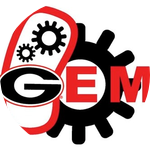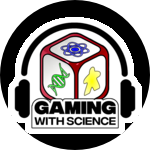About This Project
Archaea and Bacteria are two primary domains of life on earth. They encode vast but often non-overlapped biosynthetic potential with applications in making biochemicals such as materials, medicines and biofuels. Current bacterial chassis often use expensive sugars as feedstocks, which limits profitability. Using the archaeal model Methanococcus, we are developing an archaeal chassis that feeds on inexpensive CO2 and H2 instead of sugars, for next-generation biochemical productions.
Ask the Scientists
Join The DiscussionWhat is the context of this research?
Last year we published results showing that M. maripaludis is a genetically tractable model organism for archaea and an excellent chassis for exploring the potential for biochemical synthesis. As a proof-of-concept we've shown that we can engineer M. maripaludis to take in H2 and CO2 and produce small amounts of geraniol, a high-value chemical used in perfumes, fruit flavors, and mosquito repellent.
This summer we are developing a set of genetic tools and techniques to make engineering M. maripaludis more convenient. We plan to increase the metabolic efficiency for producing biochemicals. With these tools we would be able to engineer complex metabolic pathways and create synthetic operons for biosynthesis of more valuable compounds.
What is the significance of this project?
The current microbial chassis, E. coli, cyanobacteria and yeast, utilize sugars or photosynthesis to initiate metabolic pathways. M. maripaludis chassis would have a broad impact on the bioeconomy because it only requires H2 and CO2, which are abundant in quantity. This makes it economically attractive. For M. maripaludis, autotrophic growth is rapid, anaerobic product formation offers higher yields, and it costs less compared to aerobic systems. The substrates H2 and CO2 can be generated easily, and the major metabolic waste CH4 is already a biofuel contributing to an efficient energy cycle (Lyu et al, 2016, ACS Syn Biol). With new genetic tools for M. maripaludis, archaea can be promoted as the next generation chassis for synthetic biology
What are the goals of the project?
The goal of our team this year is to develop tools and methods for modulating protein expression in M. maripaludis, a species of archea. Our current focus is engineering the Ribosomal Binding Site (RBS). We are using a reporter developed by our team last year to measure protein expression levels in a library of RBS mutants. We then determine the effects of mutations in the spacer region and the role of mRNA secondary structure. To get more people to collaborate on this project we are expanding our Archaeal Interlab study to encourage more iGEM teams to work together with us. The last step is to continue our metabolic modeling to evaluate the effect of alternate carbon sources such as acetate on cell growth and geraniol production in M. maripaludis.
Budget
-Flow cytometry reagents and service fee for characterizing mutants.
-Gene synthesis for creating the specific mutations in M. maripaludis.
-Operating expenses for growing M. maripaludis, an anaerobe that requires oxygen free conditions.
-Sanger sequencing for pinpointing our specific mutations after flow cytometry analysis.
-General laboratory supplies including chemicals, antibiotics, and enzymes, etc.
Endorsed by
Meet the Team
Affiliates
Affiliates
Team Bio
Our team brings together a variety of undergraduate students, graduate students, and faculties at UGA from diverse disciplines. Our team started in 2012, since then we have progressed to the distinction of a gold medal in this past 2015 iGEM season.
We are one of the few teams that specializes in work with Archaea. We hope to make Archaea a more available chassis to the iGEM and synthetic biology community.
Narendran Sekar
Narendran Sekar is currently a Ph.D. candidate in Biological and Agricultural Engineering at UGA. His major research work focusses on studying extracellular electron transfer of microorganisms such as cyanobacteria and archaea for alternative energy (electricity) generation. He is currently working on enhancing photocurrent generation in cyanobacteria through genetic engineering approaches. Further, he is exploring exo-electrogenicity of a hyperthermophilic archaeon called Pyrococcus furiosus to generate electricity at high temperature niches. He is instructing UGA-Georgia iGEM team in metabolic modeling that helps to optimize the geraniol production in Methanococcus maripaludis using flux balance analysis. He can be reached at naren@uga.edu
Hirel Patel
Undergraduate researcher interested in the utility of methanogens in the field of synthetic biology.
Zhe Lyu
I have been working on many aspects of methanogenic archaea, including their physiology and ecology, since my doctoral studies. Working with a group of talented and passionate iGEM students, I am currently focused on developing tools for genetic engineering of Methanococcus maripaludis, an excellent model organism for methanogenic archaea. Because of its uniquely autotrophic and methanogenic metabolism, we are constructing M. maripaludis as a platform species for making high value biochemicals with an ultra-small carbon footprint. As a proof of concept, we have recently demonstrated that a recombinant M. maripaludis strain could produce geraniol using H2 and CO2 when a synthetic geraniol synthase gene was heterologously expressed (Lyu., et al., 2016, ACS Syn Biol). In parallel, the same set of genetic tools has also enabled us to explore some fundamental molecular mechanisms for methanogenesis (In progress). Another unique feature of M. maripaludis is that it shares many genes with human in the information processing system (Lyu and Whitman, 2016, CMLS). Therefore, our platform could also promote development of an archaeal model for certain human diseases (In progress).
Brian Kvitko
My program uses genetics to study how the plant immunity and bacterial disease. I love bacterial genetics and building new genetic tricks and tools to let us do new exciting experiments.
I'm also a co-host for the Gaming with Science podcast.
Kyler Roy Herrington
Kyler Herrington is a rising junior at the University of Georgia studying microbiology. He joined the University of Georgia iGEM team in the spring of 2016. He spends his lab time standardizing the team’s biological parts for submission. His research interests are broad, and after graduating he plans on attending medical school in order to one day become a clinical pathologist.
Ben Park
I am a rising junior at the University of Georgia studying Microbiology and Psychology. Research has always been a large part of my undergraduate career. Some of the research that I have been doing here has included: Investigating a universal vaccine to protect against all strains of seasonal and pandemic influenza and respiratory syncytial virus under Dr. Ted Ross, a GRA Eminent Research Scholar, UGA College of Veterinary Medicine.
In the microbiology field I have helped in researching and characterizing the third enzyme in the metabolic pathway of DMSP (dimethylsulfonium propionate) under the guidance of Dr. Hao Shi in the Whitman Laboratory, UGA Department of Microbiology.
This is my second year on the iGEM team and I am involved with the RBS (Ribosome Binding Site) library project.
Lab Notes
Nothing posted yet.
Project Backers
- 4Backers
- 3%Funded
- $59Total Donations
- $14.75Average Donation







